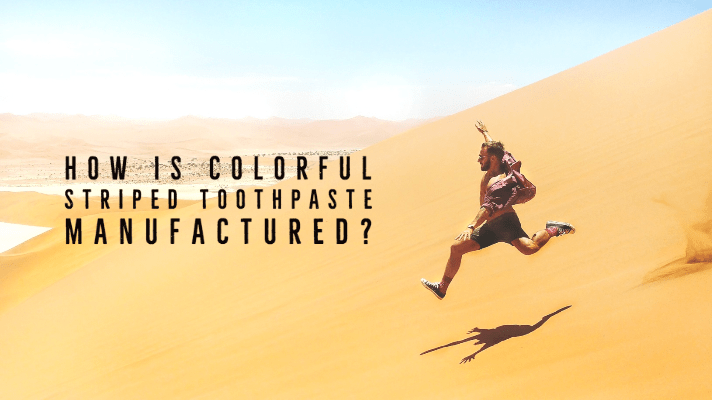Manufacturers give colorful stripes to toothpaste by using a two-in-one like tube within a tube. The main tube is filled with white paste. Another tube within the main tube is filled with colored paste. This type of design prevents white and colored pastes from mixing. A few holes are made on the upper part of the colored paste tube so that when the tube is pressed colored paste also comes out through these holes forming colorful stripes.
Some manufacturers also use two different but non-mixing pastes in a single tube. But this method does not give accurate result.
Leonard Marraffino introduced striped toothpaste in 1955. Later, the patent was sold to Unilever, who produced and marketed products under the Stripe brand name in the 60s. Initially, Stripe went on to become a successful brand. However, it failed to achieve the 8% market share that it had gained during its second year.
The design for producing single-color stripe toothpaste by Marrafino is simple and straightforward. The primary material, which is usually white, comprises of bulk and sits at the compressed edge of the toothpaste. A thin pipe is used to flow the carrier material, which uses a nozzle to descend to it. Then, the stripe-material (red in this case) fills the gap that exists between the carrier material and the tube’s top. Even though both materials are located in one compartment, but they are quite vicious to the extent where they do not mix.
As the toothpaste tube is subjected to pressure, the primary material is squeezed through the thin pipe and into the nozzle. At the same time, the pressure that is applied to the main material passes onto the stripe material as well, which exits through small holes and rests on the main carrier material as it is passing through those holes.
Toothpaste comes in a variety of colors and flavors. Chemists put flavors along with essential oils in a mixture. By using a gas chromatograph, the chemists can break the oils into components that allow them to observe the basic makeup under a microscope. Furthermore, chemists can recreate almost any flavor by combining different quantities of various oils. A dedicated testing department tests the products by applying them. If the toothpaste passes the testing stages, they are sent for packing.
In addition to that, Colgate-Palmolive in 1990 was awarded a patent for two stripes with different colors. The manufacturer made use of a different method to manufacture the product. In this case, there was an inner pipe that featured a plastic guard of cone shape around it about half its length. The guard and the tube’s nozzle end had space for one colored Stripe, which made its way out through holes in the pipe. Whereas, on the other side of the guard, there was space for the other colored Stripe, which had its own set of holes to issue out.
